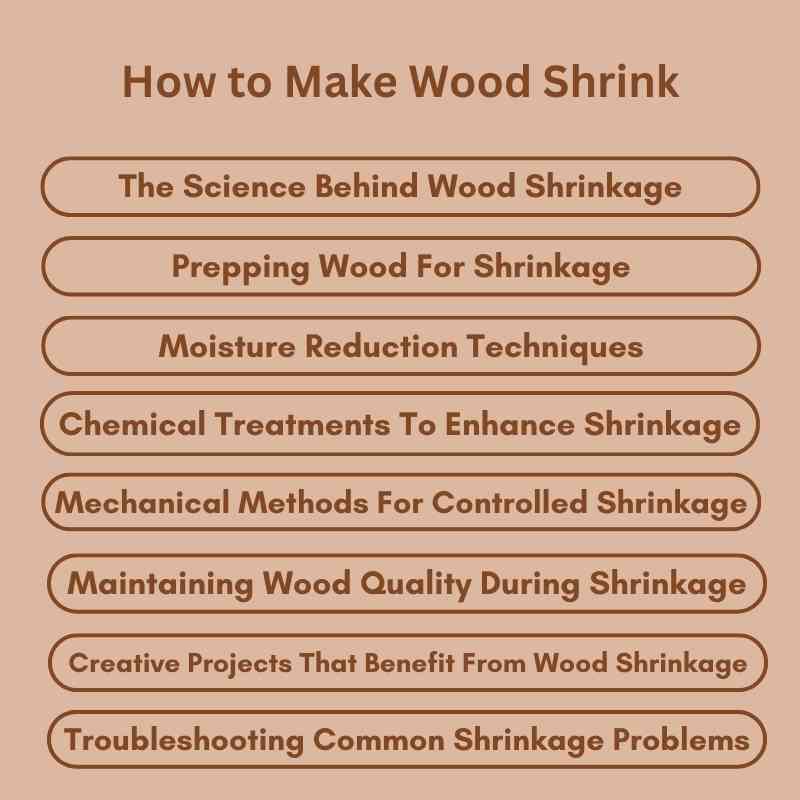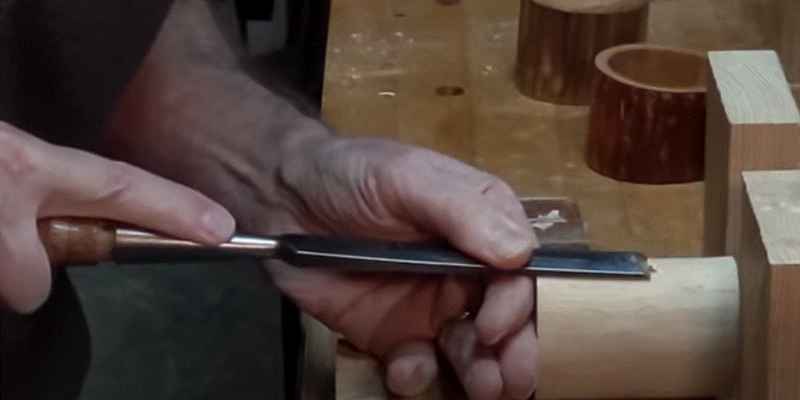To make wood shrink, reduce its moisture content by exposing it to low humidity or heat. This process causes the wood fibers to contract.
Wood is a natural material that changes with its environment. Understanding how to manipulate its moisture content can help you achieve desired dimensions. Shrinking wood can be beneficial for various projects, such as furniture making or flooring installation. Controlling moisture levels not only enhances aesthetic appeal but also prevents warping and cracking.
This guide will explore effective methods to shrink wood safely and efficiently. With the right techniques, you can ensure your woodworking projects meet exact specifications while maintaining their integrity. Embrace these strategies to master wood shrinkage and elevate your craftsmanship.
The Science Behind Wood Shrinkage
Wood shrinkage occurs due to changes in moisture content. When wood dries, it loses water. This process causes the wood fibers to contract. Temperature and humidity also play a role in shrinkage.
Wood types behave differently. Softwoods like pine shrink more than hardwoods like oak. The cell structure influences how much shrinkage occurs. Environmental conditions can greatly affect wood’s moisture levels.
| Factor | Effect on Shrinkage |
|---|---|
| Moisture Content | Higher moisture leads to less shrinkage. |
| Temperature | Warmer temperatures increase drying speed. |
| Humidity | Low humidity causes faster shrinkage. |
| Wood Type | Softwoods shrink more than hardwoods. |

Prepping Wood For Shrinkage
Selecting the right wood is key for shrinkage. Certain types shrink more than others. Pine, fir, and cedar are popular choices.
Softwoods usually shrink less than hardwoods. Look for wood with a low moisture content. This helps prevent excessive shrinkage.
Moisture measurement is important for wood prep. Use a moisture meter to check levels. Aim for a moisture content of around 6% to 8%.
Keep wood in a controlled environment. Avoid areas with high humidity. This helps maintain stable moisture levels.
Moisture Reduction Techniques
Air drying is a simple and natural method. It involves stacking wood in a dry place. Ensure proper air circulation around the wood. This method can take weeks or months.
Kiln drying offers a faster solution for reducing moisture. This process uses heat and controlled humidity. It typically takes a few days to complete. Kiln drying also kills pests and prevents mold.
Both methods have their benefits. Choose air drying for a cost-effective approach. Opt for kiln drying if speed is important.
Chemical Treatments To Enhance Shrinkage
Using chemicals can help wood shrink. Always follow safety rules. Wear gloves and goggles. Work in a well-ventilated area. Avoid skin contact with the chemicals.
| Pros | Cons |
|---|---|
| Enhances wood shrinkage quickly. | Some chemicals can be harmful. |
| Easy to apply. | May change wood color. |
| Can improve wood durability. | Requires careful handling. |
Mechanical Methods For Controlled Shrinkage
Compression techniques help in making wood shrink effectively. Applying pressure on wood reduces its volume. This method allows for controlled shrinkage during woodworking projects.
The role of heat is vital in this process. Heating wood makes it more flexible. This flexibility allows it to compress easier under pressure. Combining heat with compression enhances the shrinkage effect.
Both methods can be used together for best results. Always take safety precautions when using heat. Wear protective gear to avoid burns or injuries.
Maintaining Wood Quality During Shrinkage
To maintain wood quality during shrinkage, avoid cracks and splits. Keep wood in a stable environment. This means controlling humidity and temperature. Using a dehumidifier can help reduce moisture levels.
Ensure even shrinkage by storing wood flat. Use spacers between pieces to allow air flow. Regularly check the moisture content of the wood. A moisture meter can be a useful tool.
Always apply a finish or sealant. This protects the wood from moisture changes. Regular maintenance helps keep wood in the best shape.
Creative Projects That Benefit From Wood Shrinkage
Many creative projects benefit from wood shrinkage. It adds unique character to the furniture. Shrinkage helps in making tight joints. This leads to stronger and more stable pieces.
For furniture making, shrinkage allows for proper fitting. It helps avoid gaps in joints. Craftsmen often use this to their advantage.
In artistic woodworking, shrinkage gives a rustic look. This can enhance the overall design. Artists embrace natural curves and imperfections.
| Project Type | Benefit of Shrinkage |
|---|---|
| Furniture Making | Tight joints and stability |
| Artistic Woodworking | Rustic look and unique design |
Troubleshooting Common Shrinkage Problems
Wood can shrink too much due to dry air. Dealing with over-shrinkage involves monitoring humidity. Keep the wood in a stable environment. Use a humidifier to maintain moisture levels.
Preventing unwanted warping starts with proper storage. Store wood flat, not on its side. Use spacers to allow air circulation around the wood. Seal the wood to protect it from moisture loss.
Regular checks for changes in shape help catch problems early. If warping occurs, apply gentle pressure to correct it. Always remember, moisture control is key for wood stability.

Frequently Asked Questions
How Does Wood Shrink?
Wood shrinks primarily due to moisture loss. When wood dries, the fibers contract, leading to a reduction in size. This process can occur naturally over time or can be expedited by heating. Understanding wood shrinkage is essential for woodworking and construction projects to avoid warping and cracking.
What Causes Wood To Shrink?
Wood shrinkage is mainly caused by changes in humidity and temperature. As the moisture content in wood decreases, it loses volume. This is more prominent in softwoods than hardwoods. High humidity levels can cause wood to swell, while low humidity levels lead to shrinkage.
Can Wood Be Made To Shrink Artificially?
Yes, wood can be artificially shrunk using heat. Applying heat causes moisture to evaporate quickly, leading to rapid shrinkage. However, this method needs careful monitoring to prevent damage. Using a controlled environment helps achieve the desired results without compromising the wood’s integrity.
Is Wood Shrinkage Reversible?
Yes, wood shrinkage is often reversible. When exposed to moisture again, wood can absorb water and expand back to its original size. However, repeated cycles of shrinkage and expansion can lead to permanent deformation. Proper care and storage can mitigate long-term issues related to wood shrinkage.
Conclusion
Understanding how to make wood shrink can greatly enhance your woodworking projects. By applying heat or moisture correctly, you can achieve the desired results. Always remember to monitor the process closely. With practice, you’ll master the art of wood manipulation, leading to beautiful and precise creations.
Happy woodworking!

